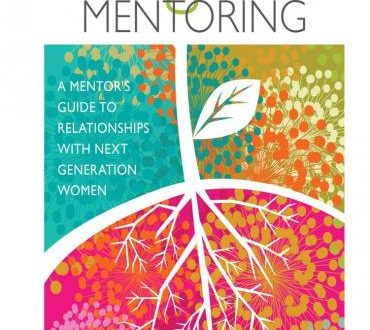On Mother’s Day last year, the church that my family called “home” for more than a decade closed its doors. Some core families had moved, our pastor had taken another position, and attempts at mergers and hiring a new pastor failed. I say this to emphasize that we departed loving each other.
My family dreaded the hunt for a worship community, but eventually we did find a new place of fellowship. Yet in our six-month search we observed how churches treat visitors, and we came away with some suggestions:
Make your church Web site visitor-friendly. Your Web site is your number one image piece for visitors. Most people will check out your site before they enter your building. Some of the sites we explored told us monthly budget info and gave head counts of attendees as well as how much the church’s numbers had grown in recent years. Yet these sites mentioned nothing about what congregants actually believed. Were numbers and budgets more important than beliefs? One site even described how much the congregation likes to drink beer, but nothing about their core values. Or maybe that was a core value? One church included a visual map with no actual address or written instructions for how to find the building. Twice we went looking, and twice we failed. Without a written address, we couldn’t even resort to using our GPS. Later when I emailed the church to tell them, I learned that the building was hidden behind some trees and the side road wasn’t drawn on the map. We didn’t try a third time. A good church Web site should include core beliefs, a physical address, accurate service times, a section on how people usually dress, the cut-off age for taking kids to the worship service, and instructions on where to drop off preschoolers.
When people visit, actually talk to them. Talking is not to be confused with greeting. At a number of churches people lined up to greet us—that is, to shake our hands. But none of these people actually sought to engage us in any sort of meaningful conversation. Leaders would stand in pulpits and declare how friendly their churches were in places where a hand shake was followed by walking away. And sometimes people manning the visitors’ stations stood engrossed in conversation with each other rather than engaging newcomers.
Watch the touch thing. When male greeters meeting our sixteen-year-old hugged her and told her she was pretty, it creeped us out. Stick to a handshake and refrain from making any comments about physical appearance.
Rethink gift-giving. We enjoyed spending the generous restaurant gift card one church gave us for visiting, but to be honest, it also felt a little like a bribe. The Gospel of John one church gave out was an idea with potential, but why didn’t they notice each of us was already carrying a complete Bible? Plus three different people gave us copies. If you feel you need to give gifts, have a reason and a strategy.
Nix party politics. The Body of Christ is a multi-national group of people who hold a variety of political views. Talking about ethics and issues is one thing. But party politics belong outside the gathering. The church gathers to worship and learn, not to debate the pros and cons of the current administration or tell us who to vote for.
Embrace diversity. Pay attention to who’s on stage. When the choir and/or musicians, announcement-givers, and speakers are all in one age bracket, of the same gender, and/or all of the same race, it communicates, “This church values only one kind of person.” On the other hand your Web site photos should reflect who you are, not who you wish you could be.
Chill on the visitor cards. Many visitors refrain from giving out identifying information until they’re sure they want more contact. At some churches, within five minutes we knew, “This isn’t a good match for us.” In those we wanted to remain inconspicuous and leave quietly. On the other hand, sometimes leaders would assure us, “Don’t worry! Nobody will visit you,” when we would have appreciated a chance to talk face-to-face. Invite people to complete the cards, but if they ignore your request, refrain from shoving a pen in their hands. And on your visitor card include a box for, “Would appreciate a pastoral call or visit.” Also leave some blank space where people can write comments. And if people give you their email address, ask permission before adding them to your email announcements.The same goes for newsletter lists, whether email or snail mail.
Make your bulletin understandable to all. That is, avoid making people feel like outsiders. That means using first and last names along with identifying information. Don’t say something like, “Pray for Sally’s trip,” which assumes everybody knows Sally and her situation. Instead say something like, “Pray about Sally Jefferson’s ministry trip to Rwanda.” And when featuring a missionary of the week, give first and last names, name of mission board, and country of ministry. Go beyond, “Pray for Jim and Sharon’s medical work,” to say, “Pray for Jim and Sharon Jones doing church planting with Crossworld in Southeast Asia.” Instead of saying, “To sign up see Katie,” say, “To sign up see Katie Jacobson or call her at 214-555-1212.”
Our family prefers close to far and medium to large, but that’s not for everybody. When it comes to visitors, make it your church’s goal not to turn every visitor into a regular, but to help people find the place of community where they can love and serve and receive the grace for which God designed them in the Body of Christ. In doing so you will greatly minister to people in transition.
Post Views: 108



8 Comments
JohnO
Good advice to churches
We went through a similar search that lasted two years (we moved from one state to another and didn't have many referral congregations to try). We also searched websites looking for clues to beliefs and often found none. We would even drive to a church on Sunday morning and sit in the parking lot to watch as congregants arrived – to see if there was a dress code and to see if people looked happy to be there. Surprisingly, they often looked more like they were attending a funeral than a worship celbration.
Your list is a great way for churches to help people find them and connect with them. I hope some follow this guide.
Sue Bohlin
Wish I could send this to every church!
I read many of your suggestions out loud to Ray; we appreciated your zinging truths! It was so hard for us to have to find a new church, a process permeated with sorrow because we were grieving the loss of what we had had for many years. Some churches are so seeker-oriented that they don't recognize that sometimes, for all kinds of reasons, mature believers also need to find a new home.
Maybe, in your spare time (HA!), you could peddle this excellent blog post to a magazine read by those in church leadership.
Sandra Glahn
Some Got It Right…
Thank you both for your remarks and encouragement.
Of course some churches got it right–providing brochures that introduced their church and its ministries as well as how to download messages from iTunes; a CD with a message and music by the church's own musicians; personnel who actually walked us to the sanctuary rather than just pointing to a hallway; and people who asked a question and really listened.
Richard Mabry
Great post
You hit almost all the situations we've encountered when we were seeking a new church home, but there's one more. The first time my wife and I visited a moderate-sized church in our city, a sweet lady leaned over, shook our hands, and said, "We're so glad you're visiting with us. But I always sit in these seats."
Sandra Glahn
I know what you mean!
Richard, you're right! Several times we got the distinct sense that we had stolen someone's regular place and they'd excuse it once, but it better not happen again. Maybe visitor centers need to hand out charts marking unreserved seats? 🙂
Sharifa Stevens
So True!
Sandi, this is such a great post for those seeking a church and for those of us who want to welcome others into ours. I have traveled to other churches in order to sing or speak, and have experienced both disturbing and uplifting interactions. I remember being invited to sing at one church where I was clearly the only African-American in attendance, as well as one of about 4 people under 45. Now, this doesn't bother me – but I was stared down and scrutinized to the point where I just glued my eyes to the cross that hung above the choir loft and prayed. (And my bestie was there with me, glaring back at the most obvious offenders!)
The pastor of that church strode up to me and gave me such a bear hug in front of everyone. The worship pastor and that pastor's spouse loudly exclaimed their excitement that I was there. I get tears in my eyes thinking about how those pastors reset the tone of how I felt and was received that day, because other parishoners followed suit. By the time I finished singing, there was a long receiving line of people waiting to shake my hand.
All that to say, the leadership can really set (or reset) the tone of a warm welcome.
Sandra Glahn
Good word
Wow. Talk about the power of a leader's influence. And who knew a bestie could have a ministry through glaring? 🙂 Thanks for your comment. I appreciate it.
LLM
Accurate observations!
Since recently discovering this blog, I'm enjoying reading all your old posts Sandra!
We have been visiting churches, and recently I was also in a bar for a billiards tournament that my husband was in. I have not been in a bar in many years. The contrast between the bar and the churches was startling to me! In the bar, people noticed me, asked me questions about myself, drew me into conversation, etc. The churches (with a couple exceptions) were sadly quite the opposite. In some we weren't even acknowledged, in some we were "greeted" but there was no effort to get in a conversation with us, etc. In many sanctuaries people were in "huddles" talking with each other, seemingly oblivious to us or other visitors. We also very frequently observed the same thing as you – that even the people manning the visitors’ stations (or people with greeter tags) stood engrossed in conversation with EACH OTHER rather than engaging newcomers!!!
My husband has been seeking genuine relationships with other Christian men, and has been completely unable to find it. One reason he signed up for billiards was to find some male friendship. He has found it with un-saved men.
This sure sounds negative. Sorry about that.
I've been trying to do some analysis…Why do so many Christians have problems being genuinely friendly and welcoming? Maybe some Christians have attended the same church for so long and/or have such established friendships, that they have just forgotten what it is like to be a visitor or outsider? Maybe Christians are less likely to have job transfers, and thus don't know what it is like to be new in an area? Maybe there is a fortress or holy huddle mentality, and there is fear of the outsider? Maybe some Christians are just “too busy” in the church? (They run from one church activity to another, and have no time to even notice the visitor or lonely person on the fringe.) Maybe something about Christianity attracts people who lack social skills? Maybe…???
I'm starting to think that churches should begin having remedial classes for their members on conversational skills, hospitality, etc. Maybe the old classic book "How to Win friends and Influence people" by Dale Carnegie should be mandatory reading…
Thanks for this post. I agree with another reponse that said you should try to get it printed in a magazine or web site for those in church leadership.